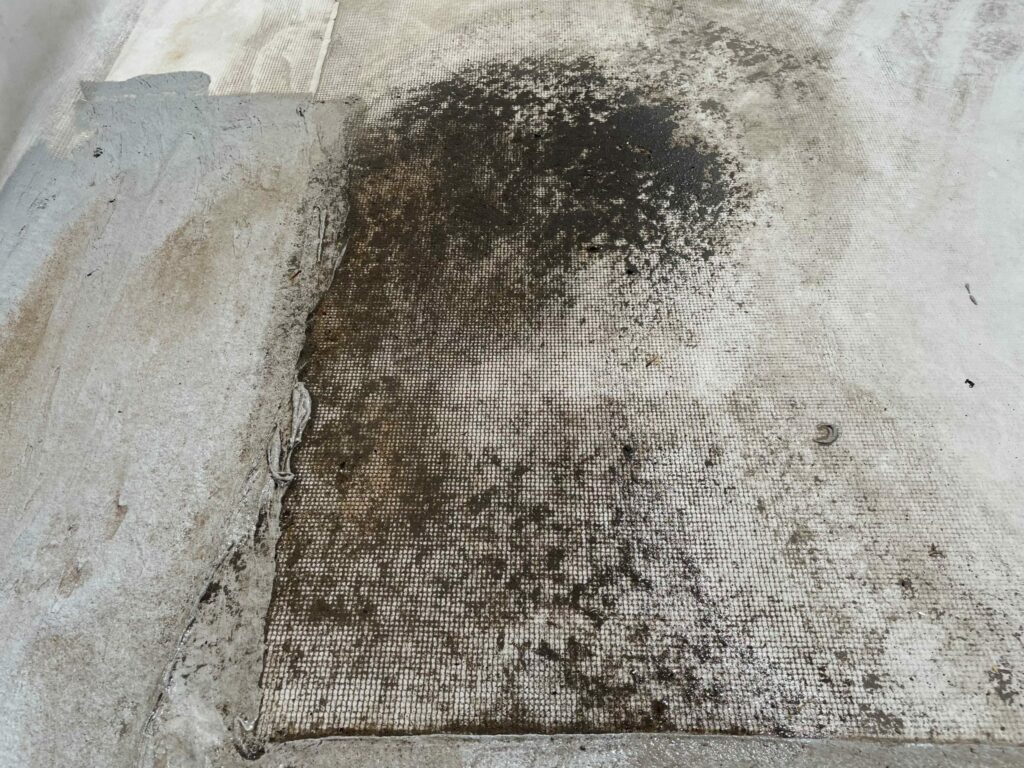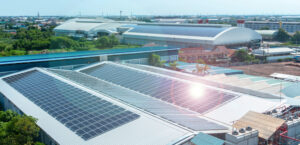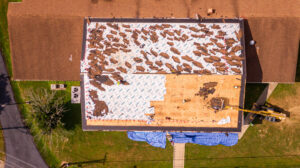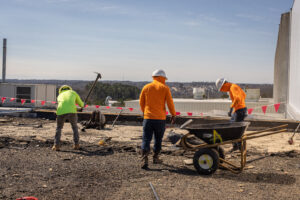Do you have a TPO roof that has been damaged by water?
Here’s what you need to know to deal with water damage on your TPO roof. Read on!

What Is TPO Roofing System?
A TPO roof is a type of flat roof made from synthetic rubber or thermoplastic polyolefin. It’s often used on industrial and commercial buildings because it’s lightweight, easy to install, cost-effective, and reflects heat.
If you have a TPO roof, then you know that it is a great choice for a commercial roof. It’s long-lasting and dependable. However, like all roofs, it is susceptible to water damage.
A variety of factors might lead to water damage. It could be due to severe weather, such as heavy rains or hurricanes. It could also be due to a faulty installation, such as improper flashing or missing shingles.
No matter the cause, water damage is serious and needs to be addressed immediately.

How Does Water Get Inside The Roof Membrane?
Some of the most common ways water can enter the roofing membrane and cause damage include:
- Punctures or holes in the membrane
- Seams that are not adequately sealed
- Leaking pipes or HVAC units can drip water onto the roof
- Flashings that are not installed correctly or that have come loose
- Heavy rains can overwhelm the drains and gutters, causing water to back up and pool on the roof.
- Ice dams can form in cold weather, trapping water on the roof.
How Does Water Damage a TPO Roof System?
Unexpected severe weather is the most common cause of water damage to a TPO roof. High winds can tear holes in the membrane, while heavy rain can saturate the roof and cause leaks. Snow and ice can also cause problems, especially if the roof is not insulated correctly. In addition, standing water on the roof can lead to pooling, eventually leading to leaks.
What Are The Signs of Water Damage On A TPO Roof?
The most obvious sign of water damage on a TPO roof is leaking. However, there are other common signs to look for, including:
- Bubbling or peeling of the membrane
- Loose roof fasteners showing bumps or ridges in the roof membrane
- Discoloration of the roof membrane
- Mold or mildew growth
- Sagging of the roof
- Musty Smell
- Water spots on the ceiling or roof leaks
If you notice any of these signs, it’s important to call a professional roofing contractor right away to assess the damage and make repairs. A qualified roofing contractor will be able to assess the damage and determine the best course of action. Ignoring the problem will only make it worse and could lead to significant structural damage to your commercial building.
Effective Tips For Dealing With Water Damage On A TPO Roof:
Inspect the Entire Roof Regularly
The best way to cope with water damage is to prevent it from happening in the first place. That’s why it’s important to inspect your TPO roof regularly and address any potential problems before they turn into leaks.
Look for bumps, peeling, holes, cracks, or other signs of wear and tear. It’s also good to have your roof inspected by a professional at least once a year.
Repair Any Damage Right Away
If you do find damage on your TPO roof, it’s important to repair it right away. Even a minor leak can cause major damage if it’s not fixed quickly.
Use a Tarp or Other Covering
If your roof leaks and you can’t fix the problem right away, it’s important to take measures to prevent further water damage. One way to do this is to cover the leaky area with a tarp or other waterproof covering. This will help stop the water from coming in until you can make repairs.
Remove Any Standing Water
It’s critical to get rid of any standing water on your roof as quickly as possible. Standing water can encourage the formation of mold and mildew, which can wreak much more havoc.
You can remove standing water with a pump or mop it up with a sponge. Just be sure to wring out the sponge well before you bring it back inside to avoid tracking water through your building.
Dry Out the Roof Surface
Once you’ve removed the water, it’s important to dry out the area completely. To accelerate the drying process, use fans and dehumidifiers.
Call a Commercial Roofing Contractor
No matter what course of action you take, it’s important to act quickly when water damage occurs. The longer you wait, the more damage will be done. If you have a TPO roof, don’t take chances with your investment—call a professional roofing contractor at the first sign of trouble.
Different Types of Professional Roof Repair Options
Here are some common roof repair options that a professional roofing contractor may recommend:
Roof Coating
A roof coating is a thick, waterproof sealant that can be applied to an existing roof to prevent leaks and extend the roof’s life. Roof coatings are available in different colors, so you can also use them to improve the look of your commercial building.
Roof Replacement
If the damage to your roof is significant, a roof replacement may be necessary. This is a major project, but it will give you a new, leak-free roof that will last for years to come.
Roof Repair
For minor damage, a simple repair may be all that’s needed. This could involve patching holes, sealing leaks, or replacing damaged parts of the roof.
Ventilation Improvements
Improper ventilation is one of the leading causes of roof damage. If your roof isn’t ventilated properly, it can lead to trapped heat and moisture, which can cause the roofing material to deteriorate.
Adding or improving ventilation is a great way to prevent future damage and extend the life of your roof.
Gutters and Downspouts
Clogged gutters and downspouts can cause water to back up onto the roof, leading to leaks and other damage. Cleaning out your gutters and downspouts regularly will help prevent this from happening.
Regular Maintenance
One of the best ways to prevent roof damage is to have regular maintenance performed by a professional roofing contractor. This can help identify potential problems before they turn into major repairs.
A commercial roofing contractor can also perform regularly scheduled cleanings to remove dirt, debris, and other build-ups that can damage the roof.
Emergency Services
If your roof has been damaged by severe weather or is leaking, a commercial roofing contractor can help you fix the damage and avoid further water damage.
Water damage is one of the most common types of damage that occurs to commercial roofs. If you have a TPO roof, it’s important to be aware of the signs of water damage and to call a professional at the first sign of trouble. By taking action quickly, you can minimize the damage and extend the life of your roof.
Is your roof suffering from water damage?
It doesn’t have to be! Eskola roofing company can help you get back on track with our professional services. Our team of professionals is available 24/7 to help you with any roofing emergency. Call us today for a free quote.






